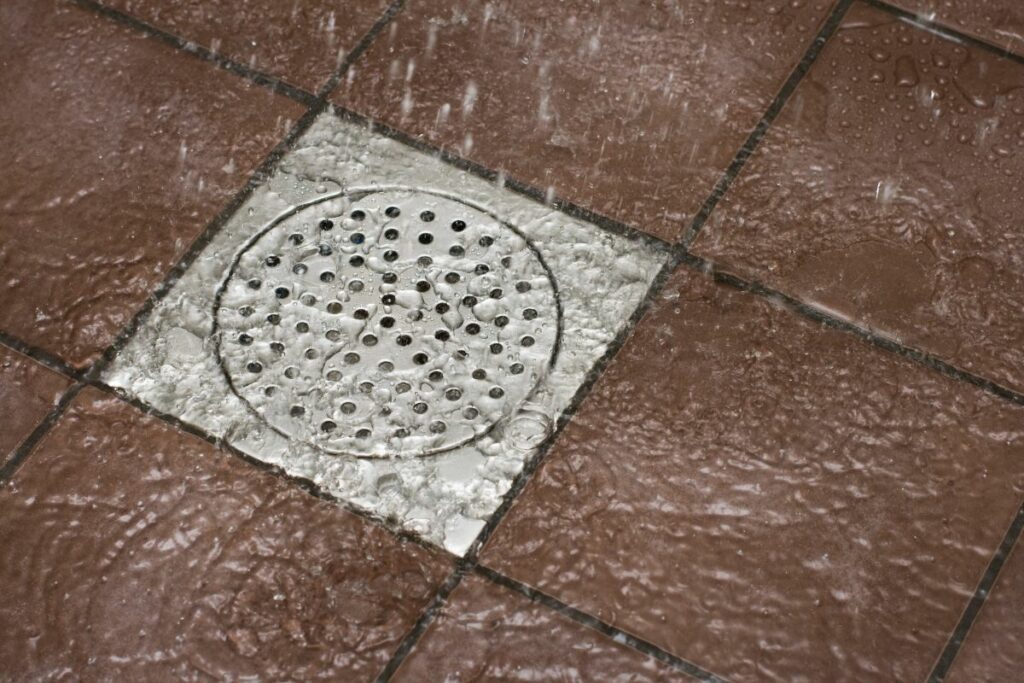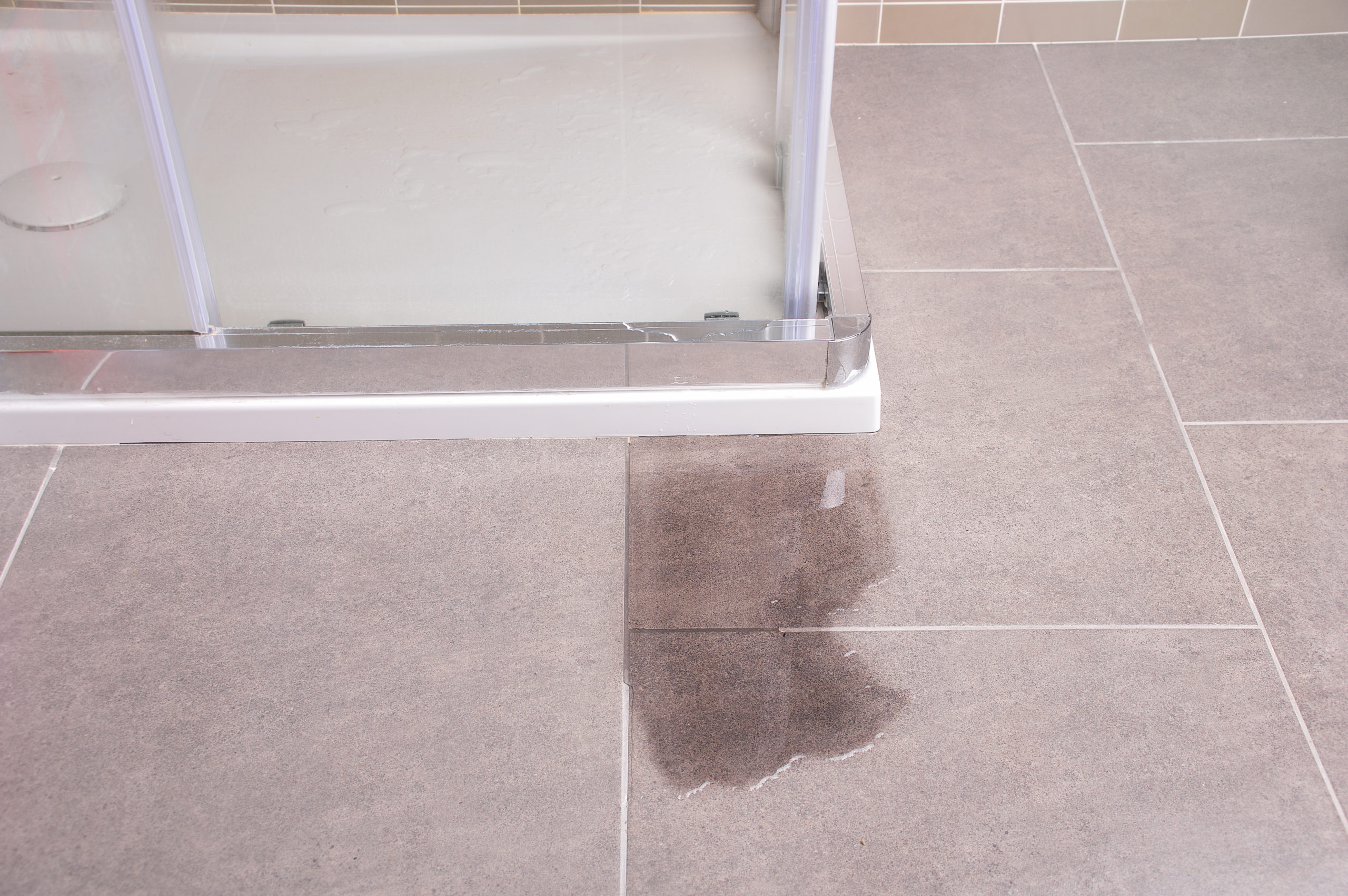If you have ever had the unfortunate experience of stepping out of the shower to find your bathroom floor soaking wet, you know how frustrating a leaking shower door can be.
Fortunately, there are a few things you can do to stop the water from coming through. First, identify the source of the leakage and then act accordingly. If the glass door leaks from the area along the wall, you need to add new caulk. In case the door leaks from the bottom, you can unclog drain holes if you have a framed door or replace the door sweeps if it is frameless. Lastly, if the shower door leaks from the contact region of two panels, you need to insert seals there.
Further, in this post, we will learn about the causes of why shower doors leak water. Then, I will suggest different solutions to stop the shower door from leaking out water.
What Causes the Shower Doors to Leak Water?
A shower can leak due to multiple flaws. Here’s a list of six major reasons why different kinds of shower doors leak.
1. Worn out Caulk
If you have framed or frameless shower doors, then you will see their edges are sealed with caulk to prevent the leakage of water. However, over time, when the calk wears out from places, the shower door starts to leak water.
2. Damaged Door Sweep
A rubber sweep is usually added at the bottom edge of the frameless shower doors which doesn’t let the water out. However, if the sweep is damaged, the water seeps through it and the washroom floor outside gets wet.
3. Improper Installation of Shower Door
If the shower door is recently been installed, and it started leaking. Then, incorrect installation is to blame. When the shower door is not installed, gaps are left behind within glass panels, and water leaks through.

4. Broken Shower Seals
Doors with frameless construction often have seals fitted on their vertical edges to restrict water from escaping through the gap. However, if the seals are broken they let the water out.
5. Incorrectly Made Shower Curbs
Showers have a curb (a raised region) that you need to cross when entering or exiting the shower. Even though it stands only a few inches tall, the drain is critical in keeping the water contained within the shower. Experts suggest that the top of the curb should be slanted 5 degrees so that water does not run through instead it moves back to the shower area.

6. Clogged Drain Holes
Drain Holes are common in framed shower doors. You will often find them on the bottom edge of the door. These holes actually drain the water which gets within the door frames. However, when the drain holes get clogged, water can overflow and leak into your bathroom space.
Shower Door Leakage Sources and Their Fixes
The next step involves looking for the leakage source. The place from where the shower leaks will determine what fix you need. Another factor that will be important is the type of shower door installed in your bathroom. Is it framed or frameless?
Case #1 Shower Door Leaks Around the Wall
If the shower door leaks from the contact point between the door and wall, that means the caulking has erupted from different places.
Solution: Apply New Caulk

The fix to this problem is removing the worn-out caulk and applying new caulk. You will find caulk in three different forms, caulk strip, caulk cartridge, and caulk gun.
- Caulk strips are simple to apply and leave little to no residue behind. The seal, on the other hand, may not be as effective as typical caulk or last as long.
- For professional results, you can use a caulk gun along with its cartridge. However, its use requires expertise.
- Using a squeeze tube caulk is a win-win situation. A caulk gun is not required for this method, which is convenient for those who do not have one.
Tips for applying Caulk
- Make the work easier by using caulk removal and finishing tools.
- Purchase a caulk color that matches your existing caulk or with your bathroom tiles. Caulks are typically available in white, almond, and clear white colors.
Case #2 Shower Leaks Through the Bottom
Shower doors are prone to leakage through the bottom. However, the cause can vary depending upon the door that is installed.
If you have framed shower door, clogged drain holes may be the cause.
Solution 1: Unclog Drain Holes
First, inspect your clogged drain holes, are they clogged? The best practice is to clean them using a small cleaning brush.
However, if the door is frameless, the first thing you need to check is the door sweep.
Solution 2: Adjust the Door Sweep
If the door sweep is broken or damaged from the ends, you have to replace it. There is no other choice. However, if it is mispositioned, then you can position it back and check if the water pours out.
If replacing the door sweep doesn’t work, the next thing left to examine is the shower curb.
Solution 3: Check the Shower Curb
Check if the shower curb’s inclination is sufficient enough to contain the water in the shower area. If not, you need to raise it. In that case, you will have to hire an expert to do the tile work and raise the curb.
Case #3 Shower Door Leaks Where the Glass Panels Meet
If the shower door leaks through the area where the glass panels meet, then you just need to install a seal in between the two panels. A seal is like a barrier that stops the water from getting out. To apply the seal, you will probably need an adhesive.
FAQs
Here’s a list of some common questions people have about leaking shower doors.
What types of shower doors are available in the market?
Shower doors are available in multiple configurations. You will find framed, frameless, sliding, metro, and single fixed panel doors. The first two types are common in houses.
Should I replace the shower door if it leaks?
You don’t need to replace the shower door completely if it leaks. You can fix the leakage issues by adding new caulk, replacing the door sweep, or adding a new seal. However, if the door has cracks that are leaking out water. Then, you can consider replacing it.
From where does the shower door leaks water?
A shower door mainly leaks water from three sources. First, from the area along the wall or bathtub. Second, from the base, and third, from the contact point between two glass panels.
Final Words
Having a leaking shower door is more than just an inconvenience. Because leaving water on the floor of your bathroom can be dangerous for you and the people around. You should act at the earliest. I hope that the methods explained in this guide will help you trace the leakage source and fix it.

Amos Christen graduated with a bachelor’s degree in Interior Design from Drexel University — Philadelphia, PA. Since 2003, Amos has worked with top interior design professionals in this area, including architects and interior/graphic/lighting designers. As a skilled interior designer, Amos Christen is highly versed in fine arts and crafts and uses that to supplement his main area of expertise. He often publishes articles related to home décor on several websites, including Sprucetoilets.com, Sprucebathroom.com, and Mybesuitedhome.com. He also contributes to leading interior design magazines.
